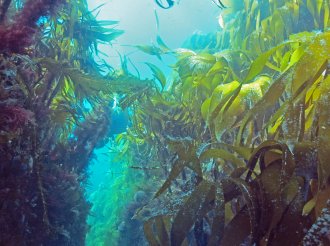
Biodiversity
A sustainable future depends on biodiversity – a diversity that is under severe pressure. Still, there is hope.
If we are to achieve robust and sustainable ecosystems, we depend on biodiversity. Biodiversity is an important indicator of the state of nature. Unfortunately, the loss of biodiversity today is huge – and it is accelerating.
The ecosystems in rivers, lakes and coastal waters – often referred to as blue infrastructure – are among the world's most species-rich ecosystems. They provide food, water and provide us with recreational opportunities, as well as protection against the effects of climate change. For example, oceans store enormous amounts of carbon, while lakes reduce the effects of floods and storms. But the pressure on aquatic ecosystems is increasing.
If we are to achieve the UN Sustainable Development Goals, the requirements of the Water Regulations and the UN Convention on Biological Diversity, we must take a holistic approach: We must manage aquatic ecosystems in such a way that we improve the condition of ecosystems and thus also safeguard their natural biodiversity. Reducing pollution and physical encroachment, restoring natural green edge zones, and establishing protected areas in rivers, lakes and coastal waters are important parts of such management.
This is how NIVA contributes
NIVA's focus area is our aquatic environment – both freshwater and marine areas – and we offer a range of services to promote biodiversity.
We can identify all species of phytoplankton, aquatic plants, sessile algae, seagrass and benthic fauna in all aquatic ecosystems.
We offer classification of environmental conditions. We develop and test classification systems and biological indicators, and we model the distribution of habitats and key species in rivers, lakes and coastal areas.
We develop analytical methods and field methodology for mapping biodiversity, including monitoring the effects of climate change and pollution impacts. This methodology ranges widely from traditional methods to modern methods including remote sensing, artificial intelligence and e-DNA, as well as comparison of the different methods.
We draw up action plans for vulnerable habitat types and develop action plans to rehabilitate polluted and modified aquatic environments.
Why does NIVA work with biodiversity?
In line with climate and environmental change, aquatic ecosystems must be managed in accordance with sustainable principles. NIVA has identified aquatic biodiversity and ecosystem understanding as a crucial research area for a sustainable future.
If you want to know more about these and other services, just get in touch.

.jpeg)